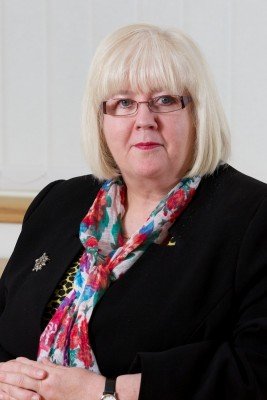Avoid the tick-box approach to managing health and safety at work
 Mary Clarke, CEO, Cognisco, explains how the tick-box approach to managing health and safety at work can be costly for businesses in financial terms as well as reputational damage.
Mary Clarke, CEO, Cognisco, explains how the tick-box approach to managing health and safety at work can be costly for businesses in financial terms as well as reputational damage.
The latest (provisional) statistics from the Health and Safety Executive (HSE) show that 142 workers were killed at work in 2013/14, and an estimated 629,000 workers had an accident, leading to 203,000 people having to take three days off work, and 148,000 over seven days.
The HSE suggests 28.2 million working days are lost due to work-related illness and workplace injury and the estimated cost of injuries and ill health from current working conditions is £14.2 billion.
However, the costs for business can be high not only in financial terms but also in terms of the reputational damage if companies fail to tackle the risks of injury or death in the workplace.
One of the biggest risks to employee health and safety is the human errors that stem from people not fully understanding aspects of their jobs or not being confident in their knowledge which may lead them to make the wrong decisions.
We have worked with hundreds of companies assessing their employees over the years and have found that most companies, around 30% of any workforce misunderstand aspects of their jobs.
Any business seeking to improve their health and safety standards needs to know not only how competent their workforce is but critically, they need to identify where people’s knowledge gaps lie and if people are behaving in an appropriate manner. To do this, obviously employee training and assessment needs to be high on the agenda, but it also needs to be approached in the right way.
We still see too many companies adopting a ‘one-size fits-all’ approach to training – putting staff through the same training and development programmes. This kind of ‘blanket’ training can be expensive, but it is also untargeted and so unlikely to give individuals the knowledge and skills they need to improve how they perform.
Another common issue is that companies might be delivering training but they are not then following up with assessments to find out what people have really learned and if they are applying their knowledge confidently and correctly at work.
A more effective and holistic approach to assessment and training is to use customised situational judgement assessments that measure people’s competence and confidence together in realistic work scenarios so they can see what people actually know and how they are applying their knowledge at work.
For example someone might demonstrate they are highly knowledgeable in certain aspects of their job however, if they are not 100% confident in this knowledge, they might not make the right decision at work.
The NHS is one organisation where the consequences of people risks can be costly and where it is imperative employees are highly skilled, competent and confident in all areas of their roles to deliver the best care for patients and not place them at risk.
We have worked with a leading NHS teaching hospital since 2009 to introduce a new approach to skills and drills training and assessment in its maternity unit with the aim of reducing serious case incidences.
The Trust’s specialist maternity unit handles over 5000 deliveries each year – many are women with known risk factors, as well as those who develop complications during pregnancy and emergency cases referred from other hospitals.
The Unit had experienced a rise in the number of cases of women suffering from postpartum haemorrhage – a leading cause of death in women after they have given birth. The analysis of such incidents highlighted the need for staff to be able to anticipate, recognise and respond immediately to women at risk of rapid clinical deterioration in order to improve patient safety and reduce the likelihood of major obstetric haemorrhage.
Our team worked with the Trust to design a specialist online assessment tool to evaluate midwives and doctors in simulated acute clinical situations such as postpartum haemorrhages. The assessment evaluated factors including people’s communication skills and decision making, their ability to spot risks, the handover to other colleagues and how they would escalate a situation, amongst other factors.
Pinpointing key areas of risk
The results highlighted important data as well as risks. It showed where greater training was needed for people with low knowledge and low confidence and highlighted people with low knowledge but high confidence who could potentially place patients at risk. It also highlighted those with high knowledge but low confidence, to enable a focus on clinical leadership skills.
The clinical teams completed the e-assessment before and after participation in a multidisciplinary simulation training programme on postpartum haemorrhage, using a high-fidelity SimDoll to recreate common clinical scenarios. In-scenario filming and use of video playback with facilitated debriefing enabled focussed individual and team learning.
The Consultant Obstetrician at the Trust who led the programme said that using the multiple response assessment has enabled them to transform their midwifery and medical training for obstetric emergencies and the simulated training allowed clinicians to practice in a safe and risk free environment. Since the introduction of these assessments the Trust has seen a measurable decline in patient safety incidents.
For the first time, the Trust was able to truly understand how knowledgeable individuals within their teams were about postpartum haemorrhages and critically, how confident they were in their decision making, as well as the likely decisions they would make in emergency situations. The assessment data enabled then to pinpoint areas of need before they did the simulation training, meaning they could tailor training accordingly and focus on areas where knowledge or confidence was low.
As a result of the assessment and training programme, the clinical staff is more decisive and assertive in their interactions. Clinical staff is also able to escalate issues more easily and are better at coping in emergency situations, plus there is greater awareness of patient needs and expectations. Team working and communication has improved and the new approach is helping the hospital develop a more robust recruitment and selection process for staff.
Conclusion
To manage health and safety at work, organisations need to be confident their employees have the right skills and knowledge to perform their jobs consistently well and behave in the right way, making the most appropriate and best decisions at all times.
To gain this assurance, companies need to gain insight into their workforce and understand how people behave at work so they can see where their people risk lie.
With this knowledge they can provide targeted individual training or coaching that help each employee improve their knowledge and confidence and in doing so, they are mitigating their risks.
Through identifying and mitigating their people risks, companies can go a long way towards improving the health and safety of their people.
 Mary J Clarke is an accomplished chief executive officer with a proven ability to develop and implement strategies that support business and financial objectives. She has led key initiatives that build a number of business start-ups. She is a respected leader, able to build highly motivated management teams focused on achieving revenue goals. Before joining Cognisco, Ms Clarke spent in excess of twenty years in the IT and Telecommunications industry. She has developed start-up businesses in the UK and Far East, served as a Vice President for Lucent Technologies, formerly A T & T Network Systems a Director of Network Services, Digital Equipment Company Limited and a Director of West Northamptonshire Development Corporation.
Mary J Clarke is an accomplished chief executive officer with a proven ability to develop and implement strategies that support business and financial objectives. She has led key initiatives that build a number of business start-ups. She is a respected leader, able to build highly motivated management teams focused on achieving revenue goals. Before joining Cognisco, Ms Clarke spent in excess of twenty years in the IT and Telecommunications industry. She has developed start-up businesses in the UK and Far East, served as a Vice President for Lucent Technologies, formerly A T & T Network Systems a Director of Network Services, Digital Equipment Company Limited and a Director of West Northamptonshire Development Corporation.
Avoid the tick-box approach to managing health and safety at work
Mary Clarke, CEO, Cognisco, explains how the tick-box approach to managing health and safety at work can be costly for
Roz Sanderson
SHP - Health and Safety News, Legislation, PPE, CPD and Resources Related Topics
Marcin Nazaruk: ‘Conditions that will create our next accident exist today’
Human error: Symptom or cause?
HSE annual workplace stats: Rise in construction deaths while 1.8m cite work-related ill health


